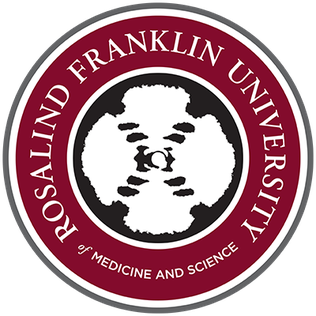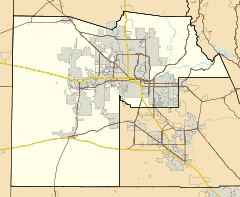
Mayo Clinic is a nonprofit American academic medical center focused on integrated health care, education, and research. It employs over 7,300 physicians and scientists, along with another 66,000 administrative and allied health staff, across three major campuses: Rochester, Minnesota; Jacksonville, Florida; and Phoenix/Scottsdale, Arizona. The practice specializes in treating difficult cases through tertiary care and destination medicine. It is home to the top-15 ranked Mayo Clinic Alix School of Medicine in addition to many of the highest regarded residency education programs in the United States. It spends over $660 million a year on research and has more than 3,000 full-time research personnel.

The Pratt School of Engineering is located at Duke University in the United States. The school's associated research, education, alumni and service-to-society efforts are collectively known as Duke Engineering.
The University of Texas Southwestern Medical Center is a public academic health science center in Dallas, Texas. With approximately 23,000 employees, more than 3,000 full-time faculty, and nearly 4 million outpatient visits per year, UT Southwestern is the largest medical school in the University of Texas System and the State of Texas.

Rosalind Franklin University of Medicine and Science (RFU) is a private graduate school in North Chicago, Illinois. It has more than 2,000 students in six schools: Chicago Medical School, College of Health Professions, College of Nursing, College of Pharmacy, Dr. William M. Scholl College of Podiatric Medicine, and School of Graduate and Postdoctoral Studies. The university is named for famous DNA crystallographer Rosalind Franklin. Photo 51, an X-ray diffraction pattern of the B form of DNA, captured by Franklin in 1952, was pivotal in 20th-century history of biology. The image is depicted in the university's seal and logo.
The Texas A&M Institute of Biosciences and Technology (IBT), a component of Texas A&M Health, and The Texas A&M University System, is located in the world's largest medical center, the Texas Medical Center, in Houston, Texas. The institute provides a bridge between Texas A&M University System scientists and other institutions' researchers working in the Texas Medical Center and the biomedical and biotechnology research community in Houston. It emphasizes collaboration between member scientists and others working in all the fields of the biosciences and biotechnology. IBT encourages its scientists to transfer discoveries made in their laboratories to the clinic and marketplace.

The Buffalo Niagara Medical Campus (BNMC) is a medical center of health care, life sciences research and medical education institutions, co-located on 120 acres (49 ha) in Buffalo, New York. The BNMC was founded in 2001 by a consortium. This project comprises one of the five "Strategic Investment Areas" that make up Buffalo, NY's Queen City Hub Plan, the city's strategic plan for urban redevelopment.
The University of North Texas Health Science Center is a public academic health science center in Fort Worth, Texas. It is part of the University of North Texas System and was founded in 1966 as the Texas College of Osteopathic Medicine, with its first cohort admitted in 1970. UNT Health Science Center consists of six schools with a total enrollment of 2,329 students (2020–21).
The University of Georgia College of Veterinary Medicine is a college within the University of Georgia (UGA) in Athens, Georgia, United States and is a top 10 ranked veterinary school.
The Centennial Biomedical Campus is 250 acres (1.0 km2) of property owned and operated by North Carolina State University in Raleigh, North Carolina, United States. It is located five minutes west of the NC State's main campus and is considered part of Centennial Campus, the university's research and educational campus.

The State University of New York Upstate Medical University is a public medical school in Syracuse, New York. Founded in 1834, Upstate is the 15th oldest medical school in the United States and is the only medical school in Central New York. The university is part of the State University of New York (SUNY) system.

Kansas City University (KCU) is a private medical school with its main campus in Kansas City, Missouri and an additional campus in Joplin, Missouri. Founded in 1916, KCU is one of the original osteopathic medical schools in the United States. It consists of both a College of Osteopathic Medicine and a College of Biosciences. KCU is one of the largest medical schools in the nation by enrollment.
The University of Arizona College of Medicine – Tucson, located in Tucson, Arizona, is one of three MD granting medical schools in the state of Arizona, affiliated with the University of Arizona. The University of Arizona College of Medicine – Phoenix was initially established as a branch campus in 2007, but became an independent medical school in 2012. The College of Medicine – Tucson campus is located at the University of Arizona Health Sciences (UAHS) center on the campus of the University of Arizona and is governed by the Arizona Board of Regents. Traditionally, the college accepted Arizona residents exclusively. However, beginning the 2009–2010 incoming class, the school changed its policy to allow for admission of "highly-qualified," non-residents.
Banner Health is a non-profit health system in the United States, based in Phoenix, Arizona. It operates 30 hospitals and several specialized facilities across 6 states. The health system is the largest employer in Arizona and one of the largest in the United States with over 50,000 employees.

Grand Rapids Medical Mile is a designated area within the city of Grand Rapids, Michigan. It began with medical-related development in the Hillside District of Grand Rapids, Michigan, bordering both sides of Michigan Street. More than a decade later it encompasses an area five times larger, expanding east further down Michigan St.and north across Interstate 196. It has also been referred to as Grand Rapids Medical Corridor, Michigan Street Medical Corridor, Health Hill, Medical Hill, and Pill Hill, among other names.

The University of Colorado Anschutz Medical Campus is the academic health sciences campus in Aurora, Colorado that houses the University of Colorado's six health sciences-related schools and colleges, including the University of Colorado School of Medicine, the CU Skaggs School of Pharmacy and Pharmaceutical Sciences, the CU College of Nursing, the University of Colorado School of Dental Medicine, and the Colorado School of Public Health, as well as the graduate school for various fields in the biological and biomedical sciences. The campus also includes the 184-acre (0.74 km2) Fitzsimons Innovation Community, UCHealth University of Colorado Hospital, Children's Hospital Colorado, the Rocky Mountain Regional Veterans Affairs hospital, and a residential/retail town center known as 21 Fitzsimons. CU Anschutz is the largest academic health center in the Rocky Mountain region.
Joe G. N. "Skip" Garcia is an American pulmonary scientist, physician and academician.
Medical centers in the United States are conglomerations of health care facilities including hospitals and research facilities that also either include or are closely affiliated with a medical school. Although the term medical center is sometimes loosely used to refer to any concentration of health care providers including local clinics and individual hospital buildings, the term academic medical center more specifically refers to larger facilities or groups of facilities that include a full spectrum of health services, medical education, and medical research.

The Ohio bioscience sector strength was ranked #4 among USA states in 2008 by Business Facilities magazine.

The Mayo Clinic Alix School of Medicine (MCASOM), formerly known as Mayo Medical School (MMS), is a research-oriented medical school based in Rochester, Minnesota, with additional campuses in Arizona and Florida. MCASOM is a school within the Mayo Clinic College of Medicine and Science (MCCMS), the education division of the Mayo Clinic. It grants the Doctor of Medicine (M.D.) degree, accredited by the Higher Learning Commission (HLC) and the Liaison Committee on Medical Education (LCME). In November 2018, the school was renamed in honor of a $200 million donation from businessman Jay Alix.

The Pearl is a 26-acre (11 ha) medical innovation district in Dilworth, Charlotte, North Carolina, United States, centered around the second Wake Forest School of Medicine campus that is currently under construction.














